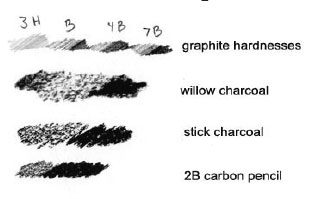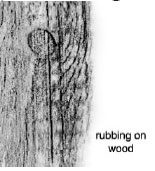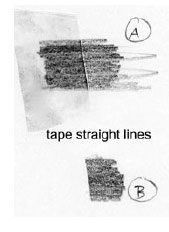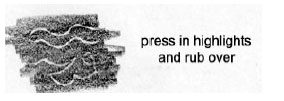Today we’ll show you some techniques for shading and highlighting.
Just as line defines accuracy in shape, shading and highlighting define accuracy in form.
Without knowledge of how to shade your drawings, your work will appear fl at, unfinished, and underdeveloped.
The first key to shading is knowing how to achieve different effects.
- You can shade using pencils of different hardness or different mediums. Since H pencils are harder than B pencils, one technique for shading is to lay in different tones with different graphite pencils.This technique will result in a more textured look than blending tones from dark to light to produce shadow and highlighted areas.Charcoal and carbon pencils produce much darker tones than even soft graphite pencils, and may also be used in dark shadow areas, but because graphite is so slippery, charcoal will not layer over the top of it easily.It does work, however, to lay graphite over the top of charcoal.
- A second method for shading is to soften tones with a blending tool. Experiment with a a paper stump or tortillion, felt or chamois cloth, tissue, other paper, q-tip, etc.Different tools produce different results, so use them accordingly; for instance, chamois cloth produces a very smooth finish that could be used for flesh, while using paper or tissue creates a more textured, uneven look that may compliment more roughly textured areas in the drawing.
- Rubbing the pencil over the top of a texture or shape is a third way to render objects or create textures in drawings.Flat surfaces rubbed with the broad side of a stick of graphite or charcoal work best (such as wood, or raised metallic surfaces), and after the rubbing is complete, you can blend the texture with a blending tool and soften with a kneaded eraser to soften the form.
- Highlights can be created in one of four ways: avoiding the light areas by shading around them, erasing after the fact (either by blotting areas with a kneaded eraser or by rubbing away lines and tone) , masking off whites using masking tape or frisket film, or pressing into the paper with another tool and then rubbing over the top.A good way of achieving the last effect is to place tracing paper over the drawing so you can see where the lights will go, drawing the lines that are to remain white hard with a sharp pencil, and then removing the tracing paper and lightly shading over the pressed lines.If you use tape on your paper, reduce the stickiness by pressing it against your clothes first, and practice lifting it off a scrap of the same paper before trying it on your drawing.
Want To Learn More …
Drawing Made Easy is a simple course which shows you step-by-step how to draw people, hands, eyes, faces and a whole lot more from beginning to end, and a goldmine of sample illustrations for further ideas.
With clear (and fun) instructions on how to draw … you’ll learn at your own pace in the comfort of your home.







